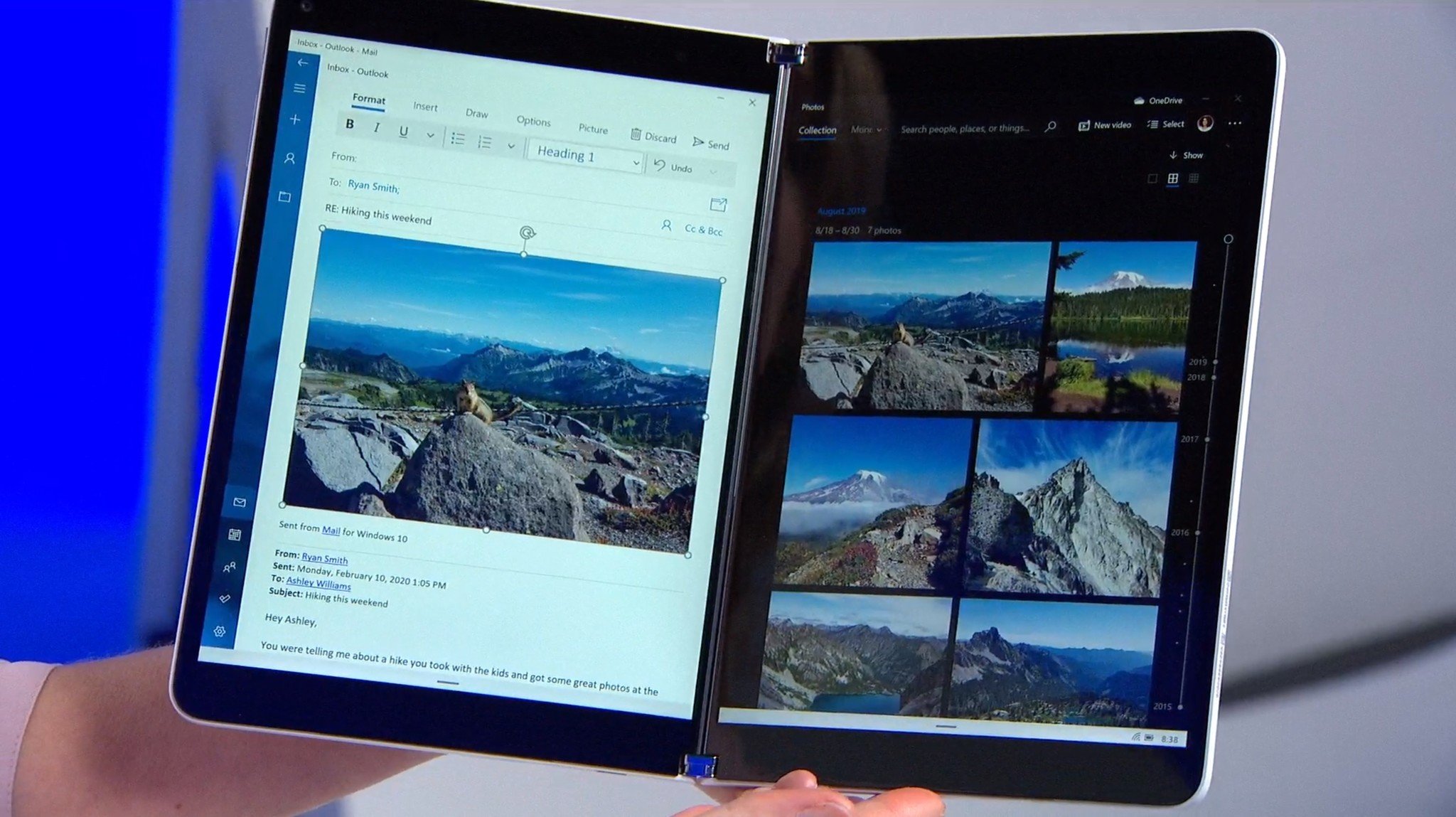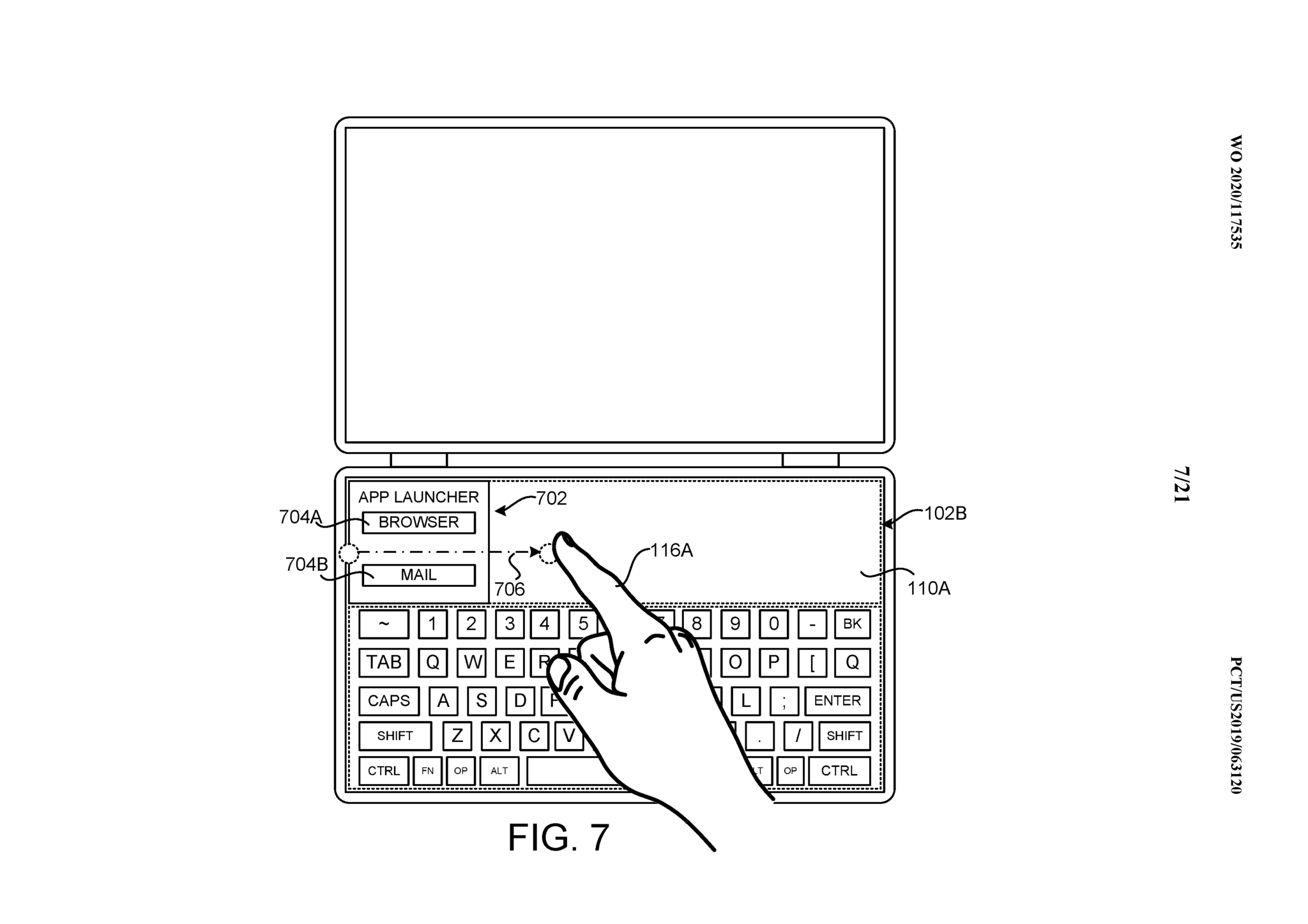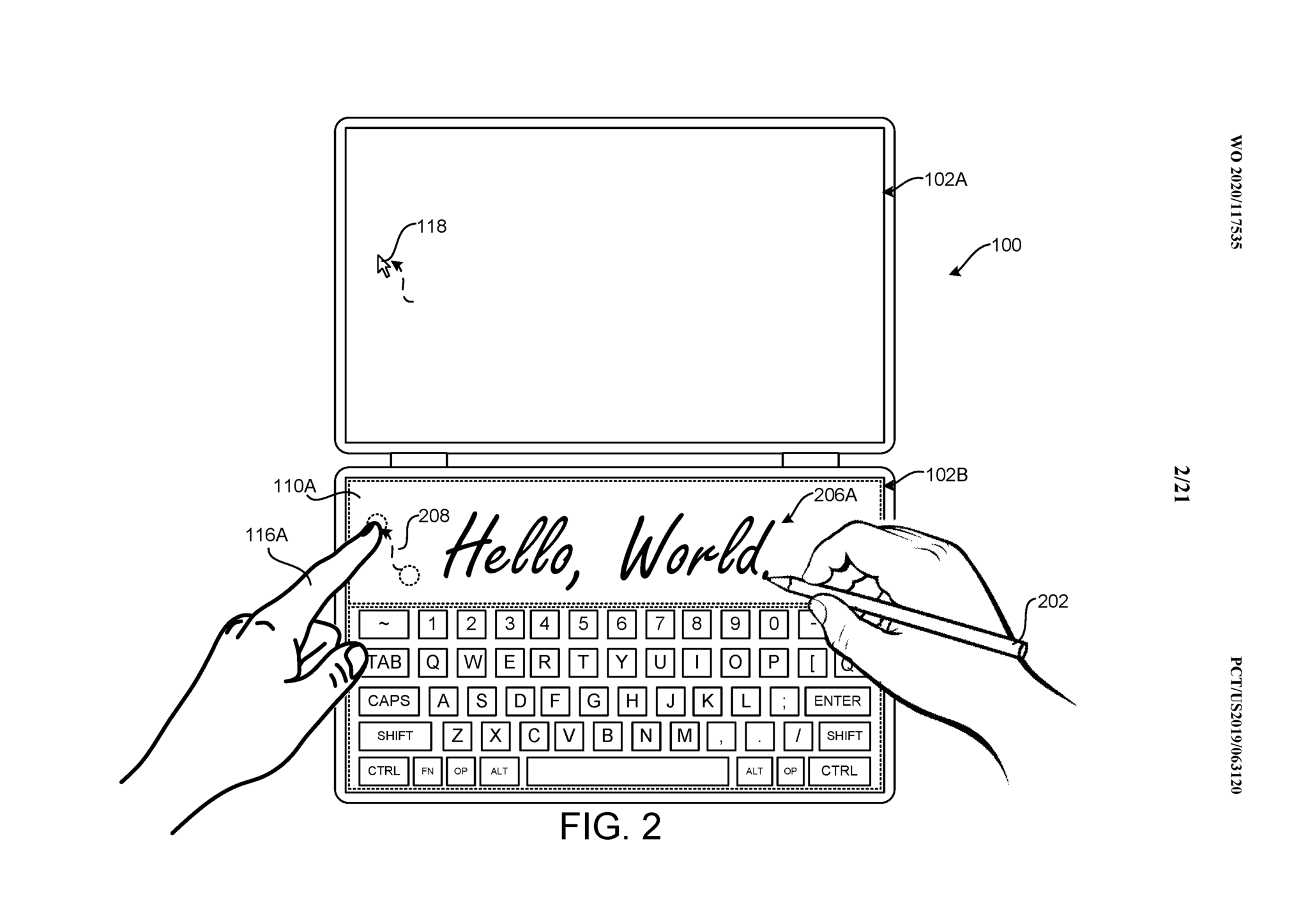Surface Neo could seamlessly switch modes, Microsoft patent suggests
People won't have to jump between input modes on the Surface Neo if the tech in a recent patent is used.

What you need to know
- The Surface Neo might seamlessly switch between input methods, according to a new patent from Microsoft.
- The patent discusses the display switching between pen and trackpad modes without manual user input.
- As with all patents, this technology might never ship on a device.
Surface Neo news is a bit scarce these days, as Microsoft's folding PC and its operating system, Windows 10X, are reportedly delayed, but a newly published patent sheds some light on how the Surface Neo could switch between input modes. The patent discusses and illustrates tech that would allow a device such as the Surface Neo to seamlessly switch between different input modes without manual user input. For example, the Surface Neo could switch to handwriting mode when you use a pen and switch to a trackpad when you touch the screen with your finger. WindowsUnited spotted the patent, which was filed for on November 26, 2019 but published today.
The Surface Neo features a unique form factor that includes two displays that can fold against each other. While people can use these displays as general touch screens on the device, Microsoft also showed off that the Surface Neo can work with a physical keyboard and a virtual trackpad. The trackpad appears above the keyboard and features some clever tricks, according to the recently published patent.
The patent explains that virtual trackpads often require user input to switch between modes. This can create a clunky workflow that makes people spend time jumping between options and modes rather than inputting data. Several scenarios are explained in the patent, but one highlights using pen input and touch input without swapping modes manually:
In one configuration, the virtual trackpad area can also receive input from a digital pen without requiring a user to change the mode of operation of the virtual trackpad. In this configuration, a user can write directly in the virtual trackpad area at any time using a digital pen. In particular, when input is received within the virtual trackpad area, the computing device determines whether the input is touch input (i.e. a user's finger) or input from a digital pen. If the input is touch input, the input is processed as touch input to a virtual trackpad to move a cursor or perform an activation operation, for example. If the input is input received from a digital pen, the input is processed as digital ink.



The patent never mentions the Surface Neo by name, but it references "a two screen hinged device resembling a traditional laptop computer." The images also appear to show off the technology on a Surface Neo.
In addition to switching between pen and trackpad inputs, the patent describes how a device can use "Modeless Gestures For Summoning User Interfaces." It breaks down a few examples, such as swiping from inside of the virtual trackpad to outside of the virtual trackpad to dismiss a UI.
As is the case with all patents, these ideas might not be part of any future device. Additionally, Microsoft might use the ideas on a different device or in a different way. If these ideas do arrive on the Surface Neo, they could streamline the input experience and take advantage of the device's virtual trackpad and touch area that's still present while a physical keyboard is attached to the device.
All the latest news, reviews, and guides for Windows and Xbox diehards.

Sean Endicott is a news writer and apps editor for Windows Central with 11+ years of experience. A Nottingham Trent journalism graduate, Sean has covered the industry’s arc from the Lumia era to the launch of Windows 11 and generative AI. Having started at Thrifter, he uses his expertise in price tracking to help readers find genuine hardware value.
Beyond tech news, Sean is a UK sports media pioneer. In 2017, he became one of the first to stream via smartphone and is an expert in AP Capture systems. A tech-forward coach, he was named 2024 BAFA Youth Coach of the Year. He is focused on using technology—from AI to Clipchamp—to gain a practical edge.
